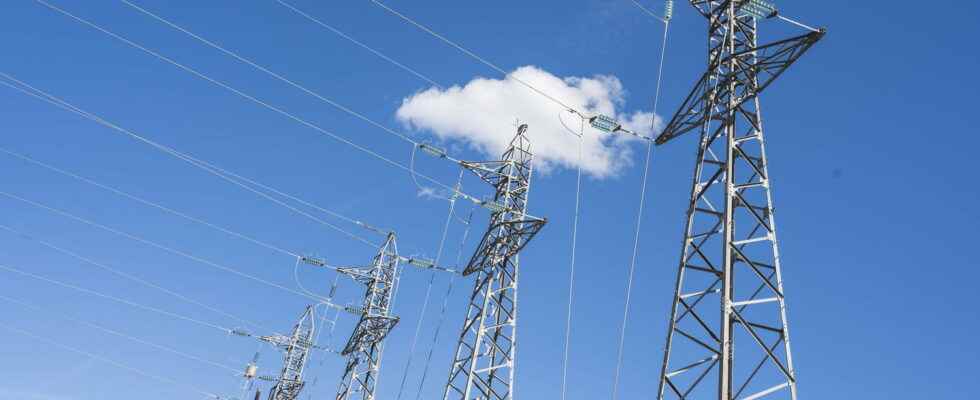ELECTRICAL LOAD SHEDDING. France is facing an energy crisis and may well have to deal with massive load shedding during the winter.
[Mis à jour le 17 octobre 2022 à 15h48] Load shedding is a practice that consists of performing “punctual cuts”, when “the electrical situation is very tense on the electrical system”, explains EDF on his site. On October 6, on the occasion of the presentation of his energy sobriety plan, the government has indicated the measures put in place in the event of an emergency on the network. Thus, to avoid load shedding, the French can follow the electricity weather forecast, Ecowatt, created by RTE, the Electricity Transmission Network and by Ademe, the Ecological Transition Agency. When the indicator is green, it means the situation is normal. The orange color corresponds to “a tense electrical system, a priori without cuts”, had detailed the government. Finally, the last level, red, indicates that the situation is very tense. In this case, “without a voluntary reduction in consumption, targeted cuts are inevitable”, writes the government in its press release.
However, power cuts should not occur without prior announcement, since the orange or red Ecowatt signal will be notified three days in advance. The government specifies that “in the most tense situations, the use of load shedding could be avoided by relying on a voluntary reduction in electricity consumption for a few hours”. RTE indicates that in order to avoid cuts, solutions are possible, such as reducing industrial consumption, but also reducing the voltage on the electricity network. These measures “make it possible to gain up to 8 GW, i.e. the equivalent of the consumption of 7 to 8 million French people”, explains the network manager on his site. In addition, the eco-gestures, adopted daily by the French, save 3,000 MW, or the equivalent of the consumption of Lyon, Marseille and Nice combined.
So far, local power cuts have never occurred in winter. RTE details how load shedding works in the event of voltage on the network. Activated as a last resort, load shedding is thus intended to reduce consumption and avoid a large-scale cut in France. These power cuts, if they occur, are localized, temporary and spread over the territory. Cuts are then organized so that electricity is not cut for more than two hours in a household and should take place during peak periods: between 8 a.m. and 1 p.m. and between 6 p.m. and 8 p.m. Some of the homes will have their electricity cut off and this will take place in turn. Finally, the electrical transmission network specifies that electricity cannot be cut off for sensitive users such as hospitals, security, national defense and industries at risk.
Unavoidable power outages this winter?
If the government is rather reassuring, indicating that these load shedding situations, if they occur, will be extremely short and coordinated, concerns remain. On October 13, Philippe Page Le Mérou, secretary of the central CSE of the energy company, assured Reuters that the country no longer had a margin of safety to ensure electricity distribution without the slightest hitch. “If we have a normally cold or very cold winter, we will not be able to do without massive load shedding. The load shedding capacities will not be enough,” he estimated.
Load shedding is a voluntary power cut on part of the electrical network. It intervenes in a very particular context, when the electrical situation is extremely tense on the electrical network. Indeed, load shedding is only implemented “to preserve the integrity of the electrical system”, indicates EDF on its website. By cutting off the electricity, we can thus deal with problems on a larger scale, and in particular network breakdowns which can occur in the event of large and sudden demand. Necessary, they are generally of short duration. Initially, power cuts should only concern businesses, explained Élisabeth Borne, the Prime Minister, on several occasions. However, the head of government does not rule out short-term cuts for individuals.
A drop in voltage corresponds to a reduction in the network voltage. Thus, the government has hinted that it could make a request to RTE (Electricity Transport Network). On August 30, Agnès Pannier-Runacher had mentioned this possibility on the air of France Inter. According to the minister, it would be necessary “to go from 230 volts to 220 volts. You don’t see it”. As she recalls, “it saves a lot of electricity”. This should not affect the condition of your appliances. Indeed, your home is considered “poorly supplied if an average minimum of 207 volts is recorded for ten minutes”, indicates the guarantor of the public service of the distribution of Vendée energies, Sydev. Other than a lamp that shines a little less or a phone charger that takes longer to fill your battery, you shouldn’t see the difference. However, if the voltage drop persists over time, it could have an impact on the longevity of your electronic devices.
Load shedding or voltage drop in France this winter? These two options are not totally ruled out by the government. However, it is more likely that we will have to deal with a voltage drop in the electrical network. This would manifest as a change from 230 to 220 volts. So nothing to worry about. Energy sobriety remains the main argument put forward by the government. Power cuts will not affect people in difficulty, recalled Élisabeth Borne, the Prime Minister, at the microphone of France Inter on September 1: “Previously, we identify sensitive users [hôpitaux, défense nationale, sécurité, industries à risque]to ensure that we do not cut the electricity to someone who has a medical device.” In addition, Agnès Pannier-Runacher, Minister for Energy Transition, indicated on August 30, 2022 on Franceinfo, that load shedding would only occur in the event of a “cold peak, [si] planned energy savings [d’ici là] are not carried out”.
